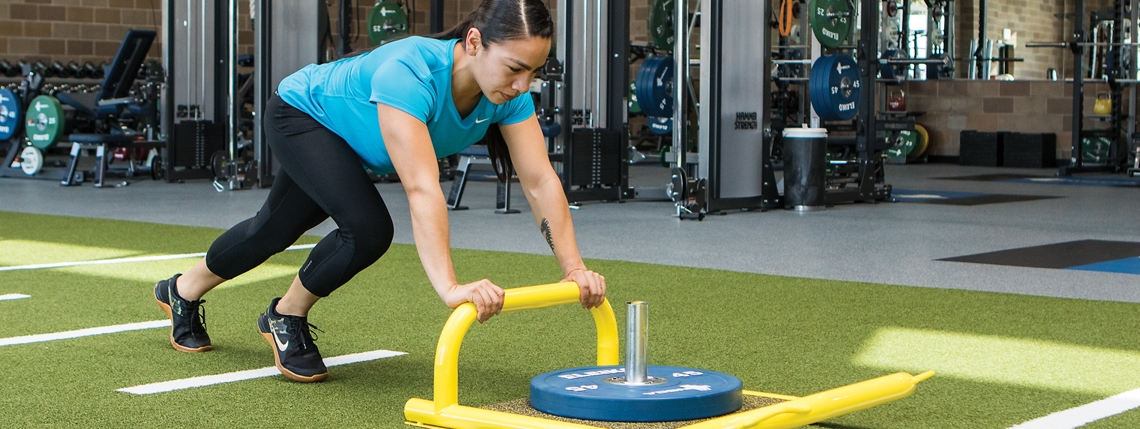Incorporating ballistic exercises into your training sessions
Ballistic exercise refers to the category of movements that applies resistance beyond bodyweight. These exercises are at an intermediate to advanced level and should be performed only after the client is able to perform exercises such as the jump squat or countermovement jump (CMJ) correctly. The loads are generally light enough to allow movement more rapid than that of near-maximal, heavy-resistance training and Olympic weightlifting (although these methods are important for power development).
Ballistic exercises offer a range of loads from which to target the force-velocity spectrum. While heavy-resistance training targets maximal force capability, and plyometric training targets fast stretch-shortening cycle (SSC) activity against a relatively low load, ballistic exercise develops power against moderate loads. Ballistic exercise offers the client a high rate of force development.
Jump variations with load are the most common lower-body ballistic exercise. These can be conducted either with SSC involvement (CMJ) or without SSC contribution to attend to specific sport demands. Accentuated eccentric loaded jump squats (extra load in the descend phase) are also an effective and relatively common exercise for developing lower-body power, because the additional stimuli in the eccentric action yields a greater than normal concentric power output. Squat movements (e.g., back squat, front squat) are considered maximal strength exercises; however, reducing the bar load by 20-50%, while applying an accommodating resistance through the use of powerlifting bands or heavy chains, increases the acceleration phase compared to normal conditions. Whether the band stretches or the chain unfurls off the floor during the concentric action, the resistance increases throughout the concentric part of the movement. Therefore, the client has to exert force through a much longer period. As a result, this movement becomes a highly effective lower-body power exercise.
Practitioners can programme ballistic exercises within a training week in several ways. One method is to dedicate a single training session per week for all ballistic exercises, performing five to six exercises, three to five sets each, with three to five repetitions. Another method is to complete lower volumes of ballistic exercise (one to two exercises, three to five repetitions) more frequently within the week or at each training session (two to five sessions per week). Regardless, as with all velocity-based training, attention to quality of movement and output (power and velocity under load) is paramount to success.
Loaded jump squat
Purpose: To develop lower-body power using SSC and to develop the ability to tolerate an external load.
Action:
- Loaded jump squats are a CMJ performed with a load from a barbell or a weighted vest. The load is typically 10-50% of body mass. In some cases, the load is much greater to try to match the higher force demands of powerful movement in that sport (e.g., track sprint cycling, football linemen).
- Descend and then transition to a vertical jump.
Figure 1a. Descent
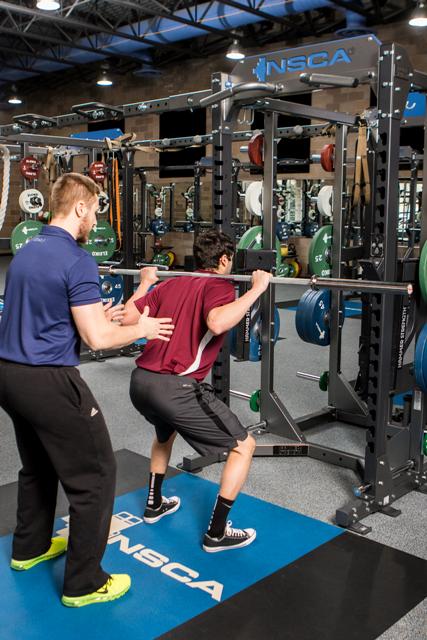
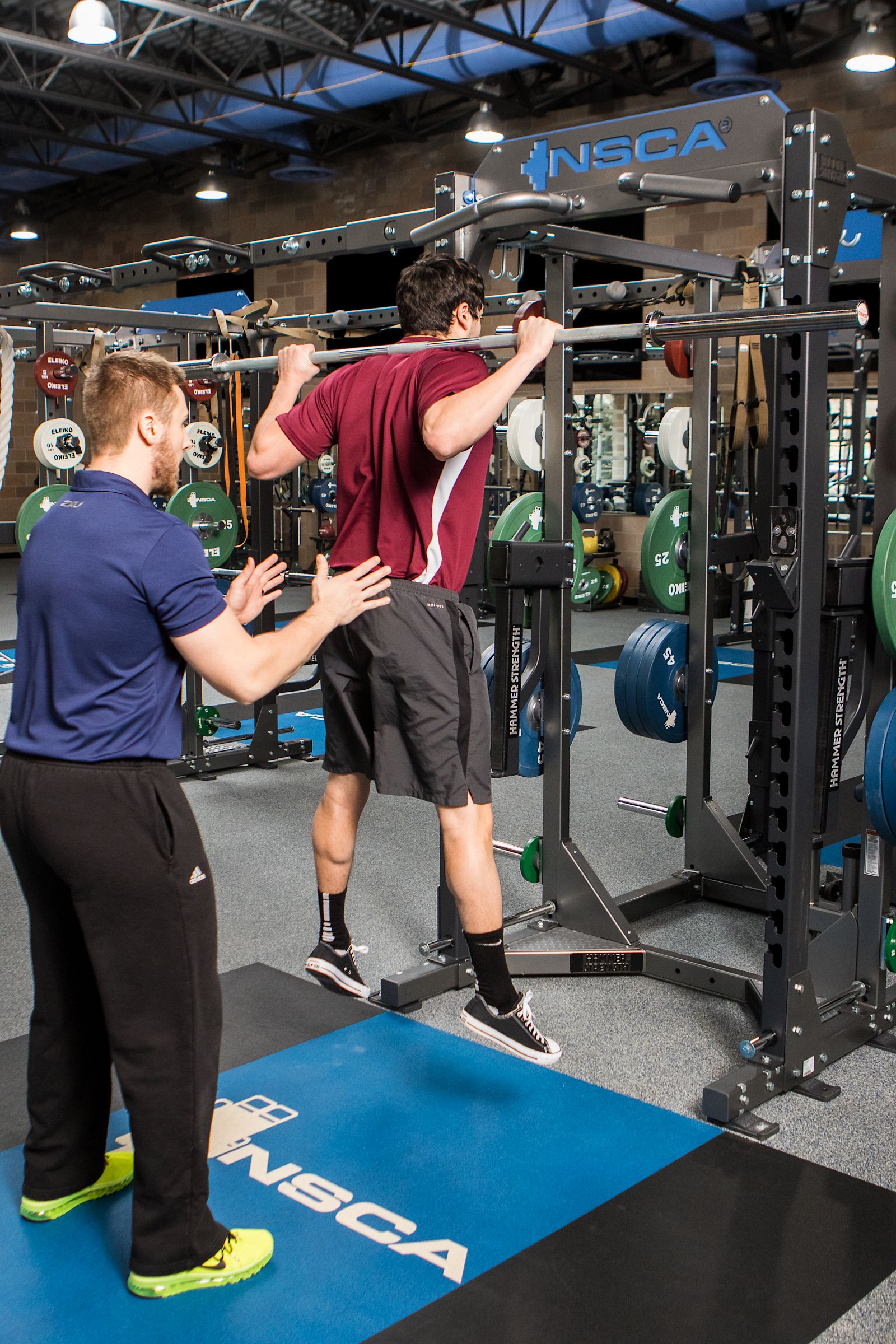
Figure 1b. Jump
Sled pull
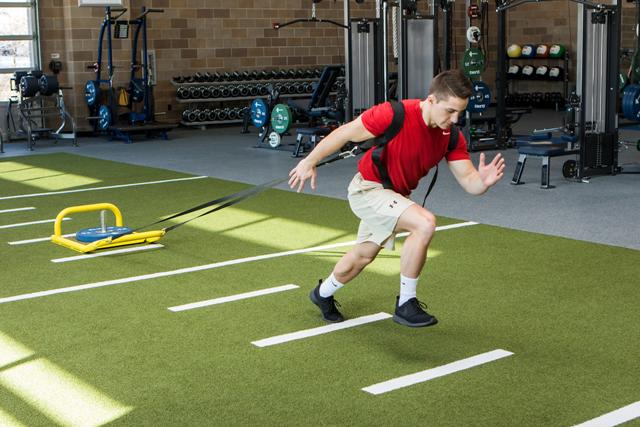
Purpose: To develop lower-body horizontal power.
Action:
- Sled pulls require a harness and a loadable sled that the client will pull while accelerating into a sprint. (Figure 2)
- Choose the load and distance depending on the client’s goal. Shorter distances (e.g., 10-30 metres) allow a high-quality effort. The load should not be so heavy that running mechanics deteriorate.
Note: The friction between the sled and the ground will affect the load.
Sled push
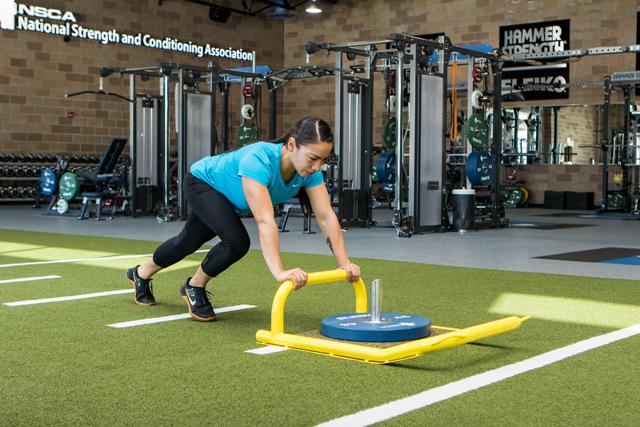
Purpose: To develop lower-body horizontal power.
Action:
- This exercise is similar to the sled pull, but the client accelerates the sled by pushing it. (Figure 3)
- This variation is suitable for sports in which horizontal leg power is applied without driving the arms (American football, rugby).
Resistor lateral and multi-directional acceleration
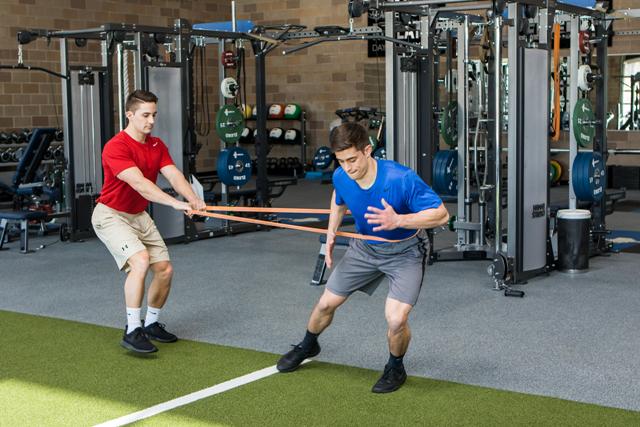
Purpose: To develop multi-directional lower-body power.
Action:
- Using a powerlifting band around the waist and held by a partner or a harness attached to resistance, perform movements such as lateral shuffles for basketball or lateral lunge steps for volleyball. Maintain a sport-relevant posture. (Figure 4)
- Perform backward movements such as those for a football defensive back, and movements that combine forward, lateral, and backward movements, such as those found in soccer, rugby and American football.
Note: The distance covered depends on the sport.
Conclusion
There are myriad effective power-development methods for the lower body. When selecting exercises and approaches, it is important to consider two main factors. First, one must consider the sporting context so that training efforts are relevant to the task in the sport. Second, it is important to consider the main areas of improvement potential for the individual client by understanding their strengths and weaknesses. Considering these two factors in concert with each other will drive making decisions and designing programmes for lower-body power development.
These exercises are an excerpt from Developing Power by the National Strength and Conditioning Association, published by Human Kinetics and reproduced with permission. For a FitPro member discount use code FP25 at humankinetics.com
Where next? Check out our Plyometric training exercises HERE


